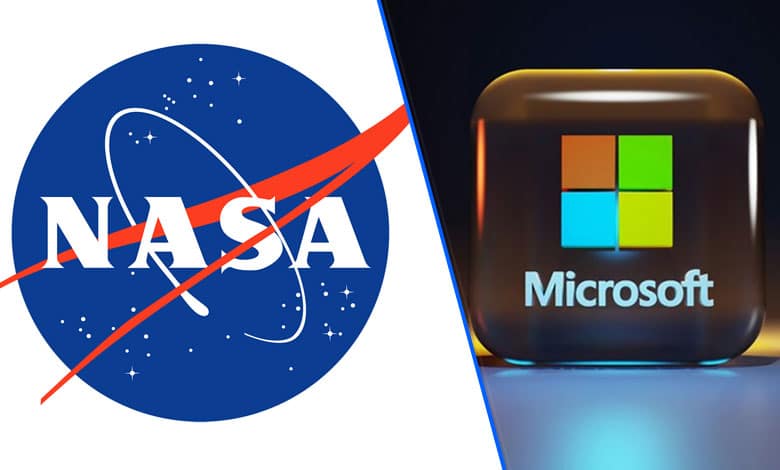NASA and Microsoft Launch Earth Copilot: Revolutionizing Access to Earth Science Data Using AI
This collaboration aims to democratize the vast geospatial data held by NASA, allowing users—from researchers to educators—to easily interact with and analyze critical Earth science information.

New Delhi: NASA and Microsoft have joined forces to introduce Earth Copilot, an innovative artificial intelligence (AI)-powered tool designed to make scientific data about Earth more accessible and understandable to a broader audience. This collaboration aims to democratize the vast geospatial data held by NASA, allowing users—from researchers to educators—to easily interact with and analyze critical Earth science information.
Table of Contents
Making Earth Data More Accessible for All
Earth Copilot is built to simplify the process of accessing NASA’s complex and expansive Earth Science datasets. Until now, this data, which includes insights on climate change, air quality, wildfires, urban planning, and disaster response, was mostly available to a limited group of scientists and researchers. However, with the new AI-powered Earth Copilot, users can now access this information through straightforward, plain-language queries. Whether it’s tracking wildfires, monitoring air quality, or analyzing soil moisture levels, Earth Copilot allows anyone to interact with critical Earth data without requiring advanced technical expertise.
Satya Nadella, the Chairman and CEO of Microsoft, highlighted the significance of this partnership: “NASA’s repository of geospatial data contains key insights on everything from climate and air quality to urban planning and disaster response — but its scale and complexity make it difficult to parse. With Earth Copilot, they’re making it easier than ever for anyone to access that data.”
Enhancing Research and Decision-Making with Earth Copilot
One of the most powerful features of Earth Copilot is its ability to process and respond to complex queries in real-time. This AI system, built using Microsoft’s Azure cloud platform, allows users to quickly access historical data, conduct trend analysis, and generate actionable insights—without the need for extensive technical training. Researchers, climate scientists, and agricultural experts can benefit from Earth Copilot by reducing the time spent on data retrieval and focusing more on data analysis and discovery.
Also Read: Telangana CM Revanth greets Sikh fraternity on Guru Nanak Jayanti
For example, climate scientists can access historical climate data to track changes in temperature or atmospheric conditions, while agriculture experts can analyze soil moisture levels to optimize crop management and predict agricultural outcomes. Additionally, policymakers can utilize the data to make more informed decisions on pressing issues like urban development, disaster preparedness, and the ongoing fight against climate change.
A Tool for Educators and the Public
Beyond researchers and professionals, Earth Copilot is also a valuable tool for educators, teachers, and the general public. By providing access to real-world scientific data, educators can engage students in Earth Science topics through interactive learning experiences. Teachers can use data-driven examples to explain critical issues like climate change, weather patterns, and natural resource management, making complex scientific concepts more relatable to students of all ages.
Moreover, policymakers can utilize Earth Copilot to better understand the environmental impact of urbanization and make data-backed decisions that promote sustainable development. The platform’s user-friendly interface means that anyone, regardless of their scientific background, can engage with and learn from the data.
AI-Driven Innovation for a Better Future
The Earth Copilot is a major leap forward in the use of AI for environmental science, as it opens up NASA’s vast datasets to a much wider audience. By simplifying access to geospatial data, the platform encourages collaborative innovation in addressing critical global challenges such as climate change, sustainability, and disaster management.
Former NASA engineer and current Azure Specialist at Microsoft, Juan Carlos Lopez, emphasized the system’s design, which can handle complex queries and large datasets efficiently. “We’ve designed the system to handle complex queries and large datasets efficiently, ensuring that users can quickly find the information they need without getting bogged down by technical complexities.”
Key Benefits of Earth Copilot
- Simplified Access: Earth Copilot allows users to access NASA’s complex geospatial data through easy-to-understand, plain-language queries.
- Time-Saving: The AI model reduces the time researchers spend on data retrieval, enabling them to focus on analysis and discovery.
- Cross-Industry Application: From climate science to agriculture and education, Earth Copilot serves multiple industries and disciplines.
- Educational Empowerment: Teachers can use real-world data to teach students about Earth science, fostering a deeper understanding of environmental issues.
- Informed Decision Making: Policymakers can leverage Earth Copilot to make data-driven decisions on urban planning, disaster response, and climate change mitigation.
Conclusion: Empowering the World with Earth Science Data
With the launch of Earth Copilot, NASA and Microsoft have made significant strides in making Earth Science data more accessible and actionable. By leveraging the power of AI, Earth Copilot empowers researchers, educators, policymakers, and the general public to engage with and understand critical environmental data. This collaboration marks a new era in how we can tackle global challenges through informed decision-making, sustainability, and scientific collaboration.
As Earth Copilot continues to evolve, it promises to be a game-changer in how we interact with and analyze our planet’s most important environmental data, ultimately contributing to a more informed, sustainable, and resilient world.
